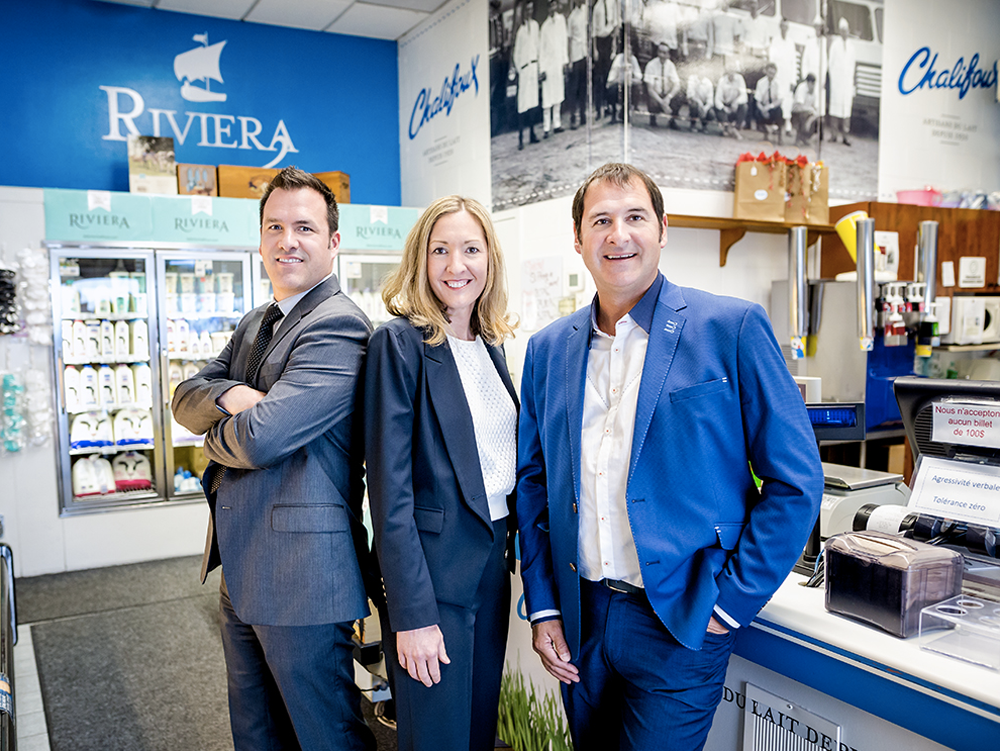
Raquettes GV: Learn to adapt to reinvent yourself
Stephen Vincent’s Story
At 50 years of age, Stephen Vincent had always worked for his family’s business. He started his career alongside his father, Maurice Vincent, in 1985. Three years previous, Maurice, a former heavy equipment salesman, had decided to take over Raquettes Gros-Louis, a 25-year-old company that had been having a hard time finding a successor. By adding the first letter of his family name, Raquettes Gros-Louis became Raquettes GV.
In the beginning, Maurice knew nothing about making snowshoes. “We started from zero. We had to learn everything from the old employees of Raquettes Gros-Louis,” explains Stephen Vincent.
Challenges to overcome
A few years later, sales had slumped through a combination of bad economic times and a few winters with little snowfall. Stephen Vincent, who had noted the appearance of the first aluminum snowshoes on the market, convinced his father to adapt to the new trend. “In less than five years, aluminum snowshoes became the norm,” he recalls. “Today, we only make about 2,000 pairs of wooden snowshoes out of a total of more than 50,000.”
After his father’s death in 2005, Stephen went from being managing director to president of the company. He also had to deal with increasing competition, especially from competitors who had moved their production to Asia.
Learning to reinvent yourself
In order to keep the company going, Raquettes GV needed to keep innovating: new frames, improved bindings, trendy colours... “Looks count in the minds of clients,” emphasizes Stephen. “So we consulted with designers and also looked at coat colours so that consumers could match their snowshoes with their apparel.”
Four years ago, Stephen hired a new sales director who launched an online store. At the moment only a small number of sales are made online, but the team hopes to develop this channel in order to expand the business.
Made in Wendake
Not at all tempted to move production to China, Raquettes GV, on the contrary, saw advantages to keeping its production facilities in Quebec.
Local production means they can react quickly and can repair snowshoes in less than 24 hours. The company can also adjust to fluctuating consumer demand that changes depending on weather conditions. “We can make more snowshoes when we have major winter snowfalls. On the other hand, we can scale back and make 30 percent fewer pairs when there isn’t a lot of snow,” explains Stephen. “If we had our snowshoes made in China, we wouldn’t be able to be so responsive.”
Furthermore, being able to say their product is made entirely in Canada attracts customers. “They have always been sensitive to this issue,” emphasizes the entrepreneur. The large majority of Raquettes GV’s customers are Canadian, with only 15 percent of its production being exported, including 5 percent to the United States and 5 percent to Europe.
More ant than grasshopper
To stay competitive without moving the company’s production facilities, Stephen Vincent does his best to keep costs to a minimum and run a tight ship. “My father taught me how to be a good manager,” he says proudly. “I pay attention to costs, to not going over budget and to putting some funds aside for hard times.”
But focusing on the numbers doesn’t take anything away from the quality of the snowshoes produced in the company’s workshops every year. “Raquettes GV is known for quality and it’s important to maintain that reputation!”
Raquettes GV in Numbers
- 50,000 to 60,000: Pairs of snowshoes made each year by Raquettes GV
- 85%: Percentage of sales made within Canada
- 26: Number of employees at Raquettes GV
Want to learn more?
Visit the Raquettes GV website


